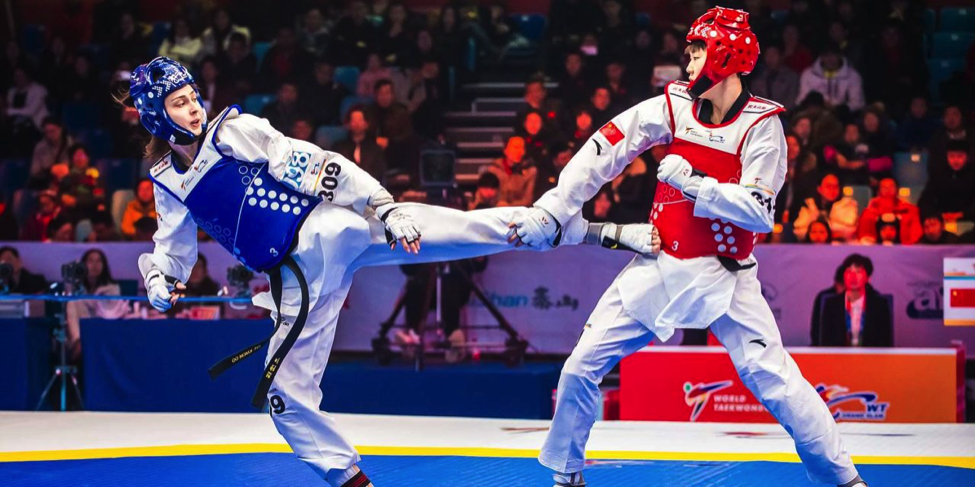I love taekwondo.
It has elegance as a martial art and poise as a sport.
It is recognised at the Olympics and has about 100 million practitioners across more than 200 countries, making it one of the world’s most popular sports.
But with some recent controversies hitting the Singapore governing body hard – such as the Singapore Taekwondo Federation (STF) being suspended by world governing body World Taekwondo in May 2019, and two senior STF officials being found to have breached international body’s Code of Ethics – there has been much coffee-shop talk regarding the future of the sport here.
What can we do to bring the sport back to its glory days?
High-performance sports models around the world include the United States’ NFL (National Football League) and NBA (National Basketball Association), international soccer clubs, world-class Olympic schools and high-profile gyms such as Evolve MMA. All have a pedagogy that works and provide lifetime careers. We are talking well-established businesses.
Can we do the same with taekwondo? As with sports or art, the acquisition and retention of customers is a business question. There must be a value associated with the regular consumption of the sport.
The governing body needs revitalisation and a new focus to keep up with the modern and tech-savvy generation. Here is a 10-step approach that may help:
- Establish a local taekwondo institute
- Launch an annual membership with benefits
- Enhance and digitise curriculum
- Develop programmes for progression, courses and certification cards
- Provide insurance for combat sports
- Extend scholarships for international tournaments
- Offer career paths
- Produce engaging content
- Community outreach
- Hold an annual “Taekwondo Day”
1. Establish a local taekwondo institute

The governing body would be a recognised authority that goes beyond basic local regulation of the sport. As the headquarters for all activities, the Taekwondo Institute will focus on promoting the sport and supporting auxiliary functions for all local taekwondo clubs, gyms and community groups.
Cost-effective services
With a major body comes business bargaining power. When managing a taekwondo club, a lot of effort is spent on acquiring logistic services (buses to transport members to and from club locations to various event locations), procuring ambulances and first-aid services for competitive events, etc. An institute, however, can issue a countrywide tender for the most cost-effective services that associate and affiliate clubs get to enjoy. Clubs can rely on the institute for reputable service providers, while service providers get to sign a contract for a lease of services to a definite size of consumers. It will be a fair, open and financially compliant process.
Training location
The institute will offer a physical space that coaches, clubs and trainers can lease – a comfortable training spot with clean changing rooms and shower facilities.
Courses
New black-belt students must attend a first aid and automated external defibrillator (AED) course before they receive their black belt. The course should be administered by a recognised first-aid training provider. Courses such as close-quarters combat could also be organised for all 2nd dan and above black belts to enhance their knowledge of self-defense – and it could be made open to all sparring-level color belts. These are just some ideas on how to continue the education of the taekwondo community.
2. Launch an annual membership with benefits
Although the organisation is not for profit, these activities, utilities, logistic bills and salaries will need to be supported financially. We will need an affordable annual membership cost of about $20.
Membership will come with benefits from the institute. Remember the bargaining power of the institute. With a numerical advantage, the business development team can negotiate deals with reflexology and sports massage clinics, health spas, sports and nutrition shops, medical clinics for screenings, and more.
Members will also receive a card with proficiency recognition attached to their membership number. We could even explore the feasibility of a point system for members to get more perks through fitness tests, etc.
3. Enhance and digitise curriculum

How can we track our progress in this sport? What are the skills a student needs to learn to progress to the next belt? How can new black belts guide new color belts? A black belt knowing how to perform a move doesn’t translate to the method of instruction and pedagogical skills. How often has someone recorded a bout or a certain move to illustrate a taekwondo technique? How about stretching and cool-down techniques?
These skills are highly essential for an effective class but are heavily dependent on the experience of the trainer. We could make these instructional videos available on a mobile application to learn or refresh skills.
How to perform a 360-degree kick; step-by-step videos of a Koryo Poomsae; conducting a dynamic warm-up session safely? and effectively; viewing attendance and achievements of a course; classroom and facilities management; managing different belt levels in a single class – download the app!
4. Develop training programmes and certification cards
More often than not, we forget that taekwondo is not just an expression of a technique or a type of martial art. Black belts must remember that for all our strengths, the system can be improved when complemented with real-world self-defense techniques.
We need to continually improve ourselves by exploring and assimilating the strengths of other training styles and one approach will be to offer programmes to enhance the effectiveness of taekwondo.
For example, an acrobatic class where backflips and aerial moves are taught could become a recognised proficiency. Physical skills could be organized and delivered in a progressive curriculum, for example – a beginners course on how to do a kip-up.
How about ground fighting techniques, as well as human anatomy and physiology? The content we could create to completement taekwondo knowledge is immense and it would provide lifelong learning options for practitioners in a multi-disciplinary approach.
5. Provide insurance for combat sports

For all the benefits of taekwondo, it is a contact sport and injuries inevitably occur – and coverage is avoided by most insurance companies. A collective authority could negotiate a combat-sport insurance that could be open to not just taekwondo, but also all combat-sport practitioners.
The opportunity and growth potential lie beyond a country and options for international coverage could be negotiated with an insurance company for coverage.
This would provide peace of mind for competitive individuals as well as regular practitioners.
6. Extend scholarships for international tournaments

To promote the sport, we need to elevate the presence of the sport significantly, and that means nurturing and supporting athletes financially to compete in high-profile tournaments.
It is basically an investment question of risk versus return. In this case, successful medalists will highlight the achievements of the sport within the country.
Promising athletes distracted by a full-time job will have less energy and commitment to the sport. Many countries producing world-class medalists have a career programme that provides some sort of stipend or salary to support an athlete, and in Singapore ,there are some scholarships available, such as the SOF-Peter Lim sports scholarship and Singapore Sports School sports scholarship.
We could offer scholarships, so promising taekwondo athletes can focus on training and competitions. Each time athletes achieve a new milestone; they would be eligible for more benefits and funding.
The penultimate goal is an Olympic medal. But for each Olympian, there are dozens of lower-tier medalists. Instead of ignoring them, we should nurture all with career paths.
The institute could have a scholarship-athlete management division focused on developing the next generation of medalists, assisting with the planning of careers for athletes from the beginning. They would follow a training regime and, depending on the milestones achieved, different paths are possible. This way, there would be performance management and progress.
7. Offer career paths

What can an outstanding individual expect after an illustrious competitive career? Like it or not, athletes have an expiry date. Statistics have shown that human performance peaks at about 25 years of age for Olympians, and retirement is a concern for many athletes.
Full-time competitors have a specific skill set that does not translate well to a corporate environment, and many individuals likely sacrificed education due to training commitments. Should a serious injury stop an athlete from progressing further, do we leave that person in the lurch? Obviously not. Physical skills are not the only component in taekwondo.
The institute would offer a variety of occupations with progression pathways for everyone – in business development, coaching, ancillary services, event organising, talent management and more.
Supported by an institute-sanctioned program, our athletes could go on to work in the media industry as stuntmen and even as actors. English actor Jason Statham (The Transporter trilogy, 2002-2008; Fast & Furious franchise, 2013-2019) was a competitive diver, Chinese actor Jet Li (Once Upon A Time In China series, 1991–1993) was a national Wushu champion from 1974-1978, just to name two people.
8. Produce engaging content

Movies and mass media are extremely efficient platforms to promote a martial art or sport. Take, for example, Ong-Bak: Muay Thai Warrior (2003) and martial arts film Ip Man (2008), which boosted interest in Muay Thai and Wing Chun.
On social media, the famous South Korean K-Tigers performance and demonstration group produce catchy songs and dances using taekwondo moves that inspire many to learn more about taekwondo. See some great clips of the K-Tigers here, here and here.
We could start a YouTube channel producing short exciting clips every week. Something in the style of comedic martial arts theatre JUMP would be a great start – audiences are wowed by the gravity-defying movements of the performers and love the hilarious storyline.
9. Community outreach
We now have a platform to endorse athletes, a membership system and career route, among other things. What we need is outreach and engagement. Training is a lifelong engagement and the earlier one starts taekwondo, the better the performance outcome.
The sport teaches self-defense and discipline and is a way for children to expend youthful energy.
The institute could organise free public performances and community events, where people of all ages can experience what it is like to kick a sandbag, kids can take part in a high-jump challenge, and the pioneer generation can learn some Poomsae movement patterns. There can be something for everyone at the taekwondo community festival.
10. Hold an annual “Taekwondo Day”
Humans are constantly looking out for the latest deals, and we have computer fairs, furniture and home improvement fairs, food fairs and the such.
How about an annual taekwondo event?
The Taekwondo Expo could be a weekend-long event where practitioners can bring friends and family to try the latest gear and combat-sports merchandise, attend workshops and explore customisation services. Get your tobok (uniform) or belt embroidered on the spot. Come taste that special nutrition and hydration drink or test the latest muscle rub. Catch performances, meet interest groups and measure your body-fat percentage at the health section. Existing vendors in the community get a free booth, and practitioners can wear their tobok for free entry.
Summary
These are just some ideas to keep the community engaged as well as promote the benefits of taekwondo to a larger audience. With tournaments, community outreach and an annual expo, we can expect each calendar year to be exciting and fulfilling. Keep fighting!
If you have any ideas, feel free to leave a comment!







I like how the ideas combine both existing practices from other institutions/organisations and novelty.
Particularly, I am more intrigued/concerned (depending on which face you would take it on) on how they can not only enhance the proficiency levels of the blackbelts, and also how they can take care of our professionals (E.g. Coaches, Referees and Blackbelts). Notwithstanding, I am also hopeful to see how they can improve and implement the protection of data integrity.
1. Enhancement and Caring for Professionals (Coaches, Referees and Blackbelts)
More often than not, most of the professionals are still in the sport for the love of teaching and spreading the art. How good will that be if they are recognised in some way or another. After all, who does not like to be appreciated/recognised. Not referring to traditional D&D, where people are “encouraged” to attend. They can look into providing incentive systems, for example, to referees whom have volunteered their time to judge in the competitions. Maybe a centralised system for qualified referees for them to accumulate their credits, which can in turn be exchanged for a voucher to purchase TKD items.
In addition, echoing what Muses has wrote, they can explore introducing an additional tab titled where all the important technical knowledge/summary are included inside this pro-only accessible link.
2. Data Integrity Protection
Anyone who accesses STF website might notice the small warning icon that screams “This site is not secure.”. Coupled with hardcopy registration forms in year 2020, they are literally screaming a marriage between the “Cyber Security Breach” and “Kill-More-Trees” campaigns. With the national-wide implementation of data protection and Millennial-driven concerns on “Save My World” campaigns, I strongly think that they can do much more than the current/existing practice.
After all, changes are inevitable. Just a matter of when.
Like!! Really appreciate you sharing this blog post.Really thank you! Keep writing.